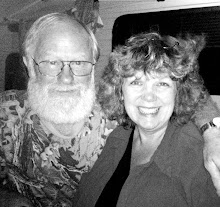 Lapsarian is from the latin word lapare: to slip, to fall, to stumble. We get our english word "lapse" from that word too. Lapsarian is defined: of or pertaining to the fall of man from innocence, and to the role of women in that fall.
Lapsarian is from the latin word lapare: to slip, to fall, to stumble. We get our english word "lapse" from that word too. Lapsarian is defined: of or pertaining to the fall of man from innocence, and to the role of women in that fall. 
In the book of Genesis, the first book of the Jewish and Christian Bibles, God creates Adam and Eve and places them in the Garden of Eden, forbidding them to eat fruit from the tree of knowledge of good and evil (often symbolized in art and literature as an apple tree).
The serpent persuades Eve to eat fruit from the forbidden tree. Eve shares the fruit with Adam and they become ashamed of their nakedness, making coverings for themselves with fig leaves.
Later God provided garments for them of animal hides. Because of their disobedience, they were banished from the Garden of Eden, to work the ground from which Adam had been taken & made.


This assemblage piece is an attempt to visualize that story, sort of in a Tim Burton-ish way. It shows the fruit of the tree of the knowledge of good and evil (shown here as an apple with teeth), with a serpent (a snake) winding in and out of it.
Eve's hand comes from inside holding an apple core. Adam, below, also has an apple core behind him, and is shown clothed with fig leaves and an animal hide (turtle shell).

+++++++++++++++++++++++++
* UPDATED * INTERESTING INFO ADDED 11/10/2009 *
I was visiting the blog of Mauren, Writing Without Paper and found some pretty cool information on Native American folklore/beliefs on turtles and turtleshells, and couldn't help but think it must surely be a "Godsidence" that had me use the turtle shell to clothe the figure symbolizing Adam in this assemblage.
Here are a few sharings from Mauren that fit with my assemblage, Lapsarian ...
"Native Americans might tell you, if you take the time to listen, that our earth was formed on a turtle's back, and so is symbolic of Creation.
Further, they might point out, the turtle never leaves its shell — its home — behind, and where home is, so is shelter, shelter as protection. . . from the elements, from predators, from violence. A place where life is within, and within which life can withdraw in self-defense. Or out of fear.
The turtle's shell, a kind of all-enveloping life jacket, is tough, not meant to crack, enduring. Meant to last as all things do that are strong like steel. Like belief in God, if it's strong enough, is meant to last forever.
Native Americans might add, the turtle is symbolic of longevity also. With longevity, if the order of things is natural, comes experience after experience after experience that, we are told as children, we need to gain wisdom that protects us from repeating our mistakes and mad acts. Wisdom to understand that in the natural order of things, beauty, too, can hold the secrets of violence that gives itself up to destruction.
.......God gave the turtle both a shelter and a softer unprotected underside.
God gave us shelter, too. He named it the Garden of Eden. For some reason, He didn't stop with Eden. He didn't stop after creating Adam in His own image. He also gave us soft and unprotected undersides we don't always know we have.
Eve, lacking the hardness of experience, and Adam, tempted by Eve tempted by the Devil, ate. . . and defiled, and beauty never again was seen with quite the same eyes."
Check out Mauren's blog for more interesting sharings too!































































No comments:
Post a Comment